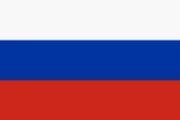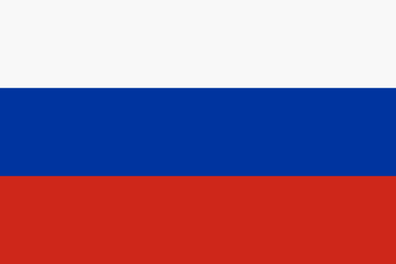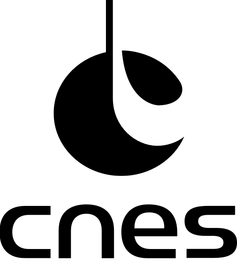Donate to Support Supercluster
Your support makes the Astronaut Database and Launch Tracker possible, and keeps all Supercluster content free.
SUPPORTSupercluster on Patreon
Your support makes the Astronaut Database and Launch Tracker possible, and keeps all Supercluster content free.
SUPPORT































This goes
to space
Bion-M No.2
The Bion-M No.2 biosatellite will carry a wide range of biological and astrobiological payloads, focusing on the long-term effects of microgravity and cosmic radiation on living organisms. The main biological payload includes approximately 75 mice, housed in specially designed enclosures that support feeding, hydration, waste removal, and temperature control. These enclosures will help maintain conditions necessary to preserve the health of the animals during the mission. The mouse experiment will provide data on musculoskeletal, cardiovascular, neurovascular, and immune system responses to spaceflight.
Alongside the rodents, the satellite will carry Drosophila (fruit flies), plants, microorganisms, and aquatic species such as crustaceans and algae. These organisms are used to study genetic expression, reproduction, developmental biology, and ecosystem interactions in space conditions. Plant growth experiments will analyze how microgravity affects cellular processes and photosynthesis, while microorganisms will be monitored for mutation rates, metabolic activity, and radiation tolerance.
The astrobiology experiments include sealed capsules containing formamide-based compounds, designed to simulate early prebiotic chemical processes. These will test whether DNA, RNA, or amino acid precursors can form under conditions of microgravity and exposure to cosmic rays. Some of the capsules include fragments of ancient Earth rocks, which serve as analogs to Martian and lunar regolith, helping researchers assess how complex molecules might form or survive in space environments.
All biological samples will be returned to Earth via the capsule’s reentry module for post-flight analysis. Researchers will examine changes at the molecular, cellular, tissue, and organ levels to better understand the combined effects of microgravity and space radiation. This data will contribute to preparations for future long-duration human space missions to the Moon and Mars.
Photo courtesy of Roscosmos.

On this
rocket
Soyuz 2.1a
The Soyuz 2.1a is a versatile launch vehicle capable of deploying civilian and military satellites into orbit, as well as carrying cargo and crew to the International Space Station (ISS). It is part of the modernized Soyuz-2 family, which features upgraded avionics, improved control systems, and enhanced performance over previous Soyuz models.
The Soyuz 2.1a can launch from all three major Roscosmos spaceports:
- Baikonur Cosmodrome (Kazakhstan)
- Plesetsk Cosmodrome (Russia, primarily for military and government payloads)
- Vostochny Cosmodrome (Russia, for civilian and commercial missions)
For crewed and cargo flights to the ISS, Soyuz 2.1a launches exclusively from Site 31/6 at Baikonur Cosmodrome.
Its first crewed flight took place on April 9, 2020, carrying Russian cosmonauts Anatoly Ivanishin and Ivan Vagner, along with NASA astronaut Chris Cassidy. This mission marked a significant shift from the previous Soyuz-FG rocket, which was retired in 2019.
Specs
Boosters (Blok-B, -V, -G, -D)
Number: 4
Engines: 1 × RD-107A per booster
Length: 19.6 m (64 ft)
Diameter: 2.68 m (8.8 ft)
Thrust (total): 3,357.92 kN / 754,880 lbf (sea level). 4,079.68 kN / 917,160 lbf (vacuum)
Burn Time: 118 seconds
Fuel: Liquid Oxygen (LOX) & RP-1 (rocket-grade kerosene)
Total Height: 46.3 m (152 ft)
Liftoff Mass: 312,000 kg (688,000 lbs)
Payload Capacity to Low Earth Orbit (LEO): 7,020 kg (15,480 lbs)
First Stage (Blok-A)
Engines: 1 × RD-108A
Length: 27.1 m (88.9 ft)
Diameter: 2.95 m (9.7 ft)
Thrust: 792.41 kN / 178,140 lbf (sea level). 921.86 kN / 207,240 lbf (vacuum)
Burn Time: 286 seconds
Fuel: Liquid Oxygen (LOX) & RP-1 (rocket-grade kerosene)
Second Stage (Blok-I)
Engines: 1 × RD-0110
Length: 6.7 m (22 ft)
Diameter: 2.66 m (9.8 ft)
Thrust: 298 kN / 67,000 lbf
Burn Time: 270 seconds
Fuel: Liquid Oxygen (LOX) & RP-1 (rocket-grade kerosene)
Image Credit: Roscosmos

From this
launch site
Site No. 31/6 - Baikonur Cosmodrome, Kazakhstan
Site 31/6 – Baikonur Cosmodrome
Site 31/6 has been an active launch pad at Baikonur Cosmodrome since January 14, 1961. Over its long history, it has supported launches of numerous Soviet and Russian rockets, including the R-7A, Vostok, Voskhod, Polyot, Molniya, and earlier versions of the Soyuz family. Originally constructed as a backup to Site 1/5 (Gagarin's Start), it has become a crucial launch facility, especially for uncrewed satellite and robotic missions.
Currently, Site 31/6 is used exclusively for launching the Soyuz-2 rocket family, including Soyuz-2.1a, Soyuz-2.1b, and Soyuz-2.1v. As Russia transitioned from the Soyuz-FG rocket to the digital flight-controlled Soyuz-2.1a, the pad began supporting crewed Soyuz MS missions to the International Space Station (ISS) in April 2020, ensuring continued access to orbit for Russian and international astronauts.
Baikonur Cosmodrome
Located in southern Kazakhstan, Baikonur Cosmodrome is the world’s first and largest operational spaceport. It is historically significant as the launch site of Sputnik 1, the world’s first artificial satellite, in 1957, and Yuri Gagarin’s pioneering human spaceflight on April 12, 1961.
Initially constructed as the primary launch base of the Soviet Union, Baikonur remained a key spaceflight center after the USSR’s dissolution. In 1994, the newly independent Kazakhstan leased Baikonur to Russia under a long-term agreement, currently extended until 2050. The site continues to host a wide range of missions, from crewed spaceflights to interplanetary probes.
Baikonur is jointly operated by Roscosmos, the Russian federal space agency, and the Russian Aerospace Forces, the military branch responsible for space operations. While Russia is shifting some launches to its newer Vostochny Cosmodrome, Baikonur remains the primary launch site for Soyuz human spaceflight missions and numerous commercial and government payloads.
Image courtesy of GK Launch Services / Roscosmos

Here's where to view Bion-M No.2
Viewing Sites
GET THE SUPERCLUSTER APP
THE SUPERCLUSTER PODCAST
A podcast exploring the amazing milestones that changed space history, the wildest ideas that drive our future, and every development in this new Golden Age of Space.
Donate to support
Your support makes the Astronaut Database and Launch Tracker possible, and keeps all Supercluster content free.
SupportCOPYRIGHT 2021 SUPERCLUSTER LLC





